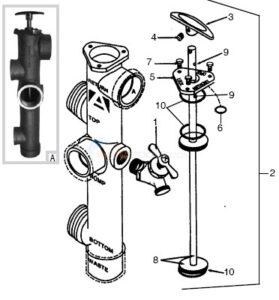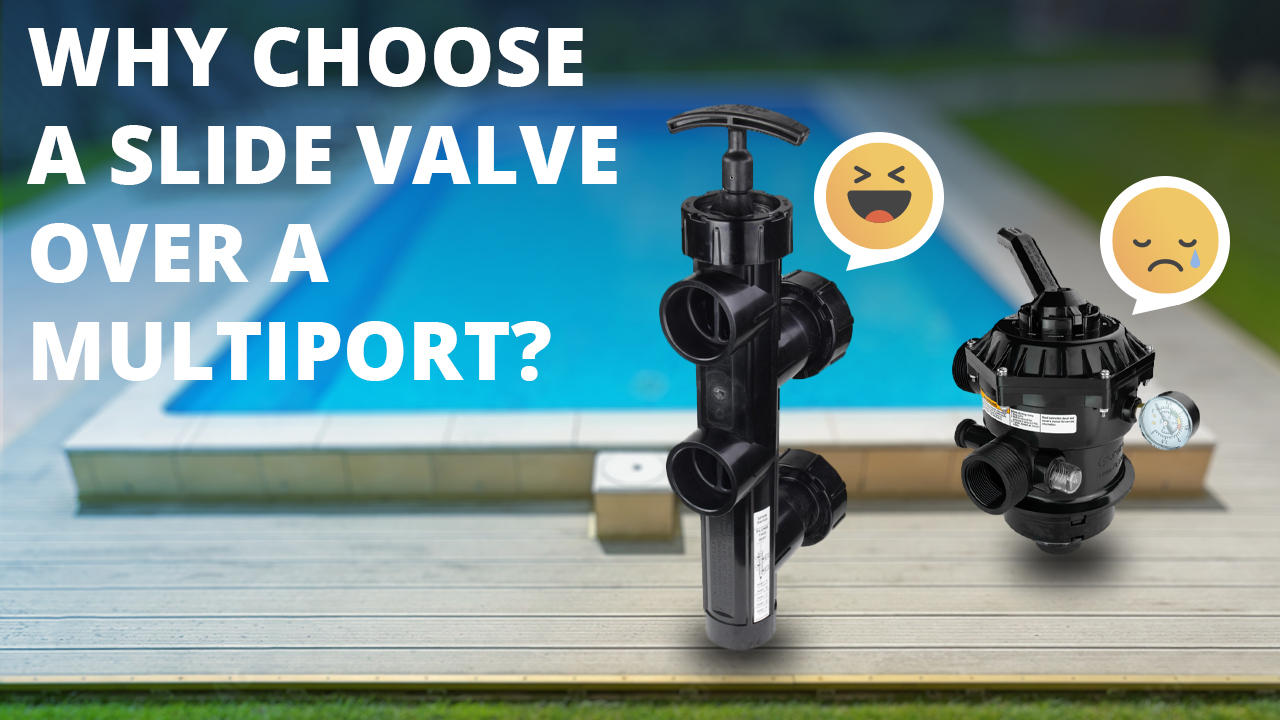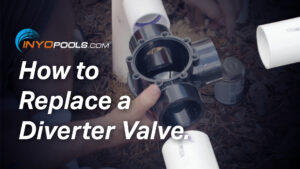Hello and welcome to INYO Pools. Today we are discussing push-pull valves, also known as slide valves. The slide valve gets its name from the way it is operated; by sliding the piston handle up or down, you can select the water pathway (whether it is regular filtering, backwashing, or waste). In this guide, we’ll cover why a slide valve may be best for your application, its elements, and how to operate such a valve.
How it works
Slide valves have two main components – the valve housing and the piston. The valve housing features five ports: two ports attach to the filter tank, and the other three are used as the Pump in-line, return line, and waste line. Most slide valves can be used on either a sand or DE filter. Because sand filters water from the top down, and DE filters from the bottom up, the pump in-line and return line are transposed. The below instructions show how to set the filter to backwash for both filter types.

For DE Filters
Normal Filter
The handle should be in the DOWN position, with the selector arrow set to LOCKED.
Backwash
Turn off your pump. Then, turn the valve handle to the OPEN setting and pull straight up. Next, turn on the pump, and the reversal of water flow will flush the DE through the waste line. When backwashing is complete, please turn off the pump and reset the valve to FILTER by pushing down the valve handle and then turning it to the locked position.
For Sand Filters
Normal Filter
The handle should be in the UP position, with the selector pointing to LOCKED.
Backwash
Turn off your pump. Then, turn the valve handle to the OPEN setting and push down on the handle to reverse the water flow. Turn on the pump, and the water flow reversal will flush dirt and silt from your sand through to the filter’s waste line. When backwashing is complete, please turn off the pump and reset the valve to FILTER by pulling up the valve handle and then turning it to the locked position.
**Not all slide valves operate in the order as the examples discussed above do. Make sure you read your valve’s instructions/labels before operating**
Why should you choose a slide valve?
Advantages:
- It is great for tight equipment pads. Its compact design means it can be used in almost any application.
- It boasts a simplistic design. There are only two to four moving parts, making repairs and general maintenance easy.
- Fewer parts make for fewer repairs. Therefore, it’s cheaper to operate over the lifespan of the valve.
- It’s less restrictive to water flow.
Why it might not be for you?
Disadvantages:
- There’s no built-in bypass/recirculate setting. Some pool additives cannot be used (you completely remove the filter media from the filter tank).
- There’s no Rinse setting. Debris left in the pipes during backwashing gets directed back to the pool instead of rinsed to waste.
Now, if you’re looking for more comparisons between a slide valve and a multiport valve, check out this article.
Should I install a slide valve on my pool filter?
Sure! There is no reason to shy away from it, whether it is installed on a brand new pool or replacing an old slide valve. Though, is it worth replacing a multiport valve with a slide valve? I would have to answer that it depends. Pipe configuration, height clearances, and the extra features that a multiport valve provides can make you stick with an MPV.
Hopefully, you have found this information helpful. If you have any comments or thoughts on slide valves, please leave a comment below.













Leave a Reply